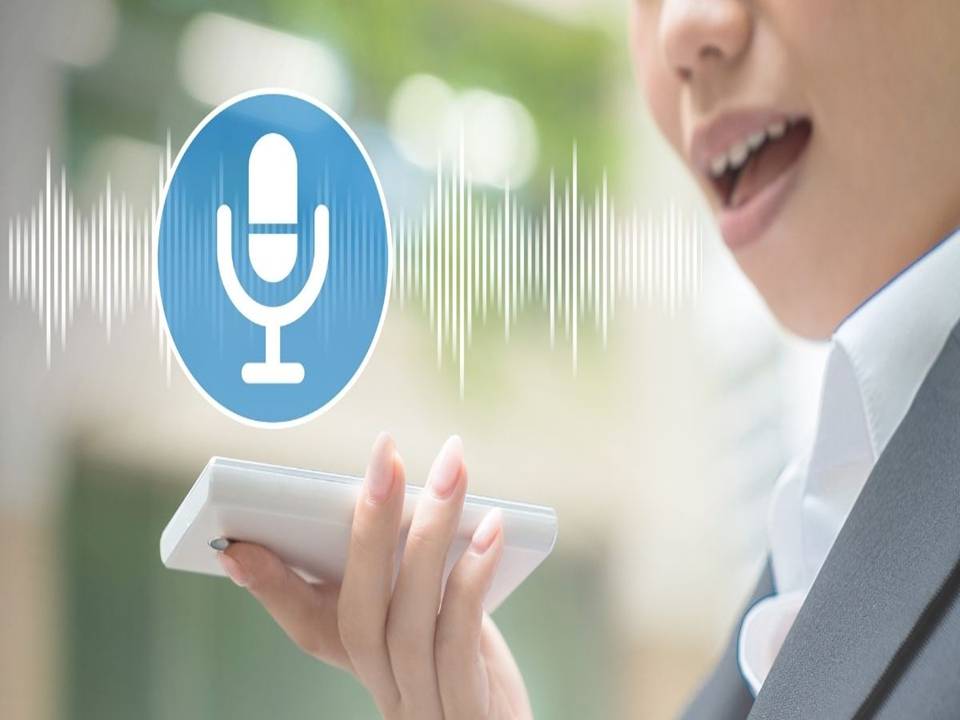Data collection is a procedure for collecting information from various sources. In this article, you’ll know all about voice data collection. Moreover, we will address its multiple aspects.
Let us have a look at what is voice data collection. How and why institutions collect voice data?
What is Voice Data Collection?

Voice data collection is a way to get audio data from numerous sources. Search engines have engaged people in a lot of advanced ways with the use of their voices.
There are various sounds of humans. So, it is a challenging task to train the machines to recognize and work on different audios. However, it is possible through the usage of artificial intelligence (AI).
Moreover, virtual assistants have to collect a large number of quality audio data. This data helps to understand human speech.
Information About The Sources of Voice Data Collection
Nowadays, it is not difficult to collect audio data. Smartphones are the primary sources to collect the data. Voice assistants in smartphones like echo and Google assistant record the voice data. These smartphone voice assistants collect such data that is smarter in the future.
This data is used to develop different new features in the future. Besides, it makes it easier to understand the queries of the users.
Siri is one of the significant sources for voice data collection. It records everything that you say or command.
Voice data collection is also carried out through call recordings. Media recorder is an internal feature in android phones. This feature in Android phones also collects audio data.
What is the Purpose of voice data collection?
Voice data is used for various purposes. Institutions and organizations collect it from the local public. It is used to train artificial intelligence and to understand human speech. This data is useful for automatic speech recognition and virtual assistants. They use the audio data to communicate with the audience naturally.
Institutions use audio with different pronunciations and moods to recognize human speech.
Private organizations use it for marketing and ad-making purposes.
Army also uses voice data for protection against terrorism. Government agencies also use audio data to keep an eye on suspicious activities of people.
Utilization of Voice Data Collection

The purpose of collecting voice data is to provide better marketing services. This recorded data helps in developing new features.
The famous business platforms, including Amazon and Google, collect data from different devices. It becomes easier to provide better services to the customer with the usage of audio data.
Innovations take place by using audio data. Google and Amazon can use the recorded data for the advertisement purpose also in the future.
Automobiles have an automotive navigation system due to voice data collection.
Call Centres use this data to identify and rectify their strengths and weakness.
Voice collection data is beneficial to conduct qualitative researches.
Why is Voice Data Collection Important?
Voice data collection is of great importance. Smart devices use this to understand the lexicon pronunciation of all languages.
AI is in the course of learning the voice-enabled system. While for humans, it is easy to recognize different tones and sounds.
AI requires a large amount of audio data to work productively like a human.
Wrap it up!
This modern era is full of technology, and humans created innovations to help themselves. Even voice has become a source of convenience through technology. You can transmit messages or make calls while doing work by just commanding to Siri or Google Assistant.
Different devices have access to our voices. These devices store and record human voices. The purpose of recording other voices is to recognize human speech. Voice data Collection is quite helpful for Artificial Intelligence.
How voice information assortment functions
Organizations gather voice information from gadgets that require the utilization of voice orders, similar to Amazon’s Alexa or Google Right hand. Voice information can likewise be gotten through:
In-vehicle route frameworks
Call focus information
Public discourse information bases
Every gadget records and indexes demands and adds them to its information base. Now and again, brilliant home innovation may likewise record discussions as a component of its voice information assortment endeavors. Then, this information is handled by artificial intelligence to more readily figure out how to speak with people.
It’s not generally clear when information is being gathered. For instance, Amazon’s Alexa will record a discussion without the client’s information in light of the fact that the gadget thought somebody said its name. Those discussions are here and there sent through Amazon’s evaluating interaction, which can present protection issues. In any case, figuring out how to adjust security settings can assist clients with shielding themselves from energetic innovation.
Each organization that gathers information claims the information it gathers. Clients give up control and responsibility for by utilizing the gadget.
How the information is utilized
The voice information assortment inventories are being utilized to make individual partner applications better. Only a couple of the applications that use this information include:

Google Aide
Microsoft’s Cortana
Amazon Alexa
Apple’s Siri
Samsung’s Bixby
Windows DataBot
Chrome’s Alice
Voice orders can work in the event that the gadget being utilized grasps the client. Overwhelmingly of voice information, gadgets will actually want to accomplish beyond what they might at any point do. They can likewise comprehend human discourse better, diminishing the requirement for clients to rehash demands.
Most organizations endeavor to be straightforward about how the voice information they have gathered is utilized. For instance, the Google Home brilliant speaker doesn’t store sound accounts of course. Be that as it may, it is frequently suggested by organizations since it can further develop man-made intelligence innovation. Thusly, that makes their items simpler to work, improving the client experience.
Why voice information assortment is progressing
Voice information assortment is continuous on the grounds that human discourse is complicated, particularly as clients settle in utilizing gadgets. Rather than articulating plainly in light of the fact that a machine is being tended to, an ever increasing number of individuals will address maybe they were addressing a companion. That implies man-made intelligence innovation should have the option to recognize words, expressions, and orders when an individual’s discourse changes since they are miserable or tired, or whether they are talking boisterously or delicately.
Vernaculars can change, contingent upon where an individual resides, and accents can make a few words sound totally unique, it is addressing rely upon who. Overwhelmingly of voice information, and proceeding to do as such, computer based intelligence programs can grasp everybody, no matter what their race, culture, age, and other individual elements.
The fate of voice acknowledgment innovation
Today, gadgets are for the most part being directed to execute straightforward errands, such as perusing so anyone might hear the most recent news titles or switching out the lights. As man-made intelligence innovation keeps gaining from voice information assortment, its capacities will just increment. Gadgets will actually want to deal with additional complicated undertakings, and advertisers might have the option to utilize accounts to more readily target clients. For instance, innovation that can peruse the inclination in individuals’ voices might have the option to customize suggestions in view of how they are feeling.
Innovation will be more accessible to the people who found it challenging to use previously. There is no learning expected to utilize voice orders, not at all like the abilities that are expected to type on a console or interface with a touch screen. Voice information assortment empowers innovation and machines to adjust to human way of behaving rather than the opposite way around, enabling it to change almost any industry.
24x7offshoring.com – Your vision.. Our process
Discover Incredible Introduction:
Voice data collection plays a pivotal role in training and improving AI systems, enabling advancements in speech recognition, natural language processing, and voice assistants. This article delves into the significance of voice data collection, highlighting its impact on the performance and capabilities of AI systems. By understanding how quality voice data enhances these technologies, we can appreciate the importance of collecting and leveraging voice data effectively.
- Enhancing Speech Recognition: Voice data collection is crucial for training speech recognition models. By collecting diverse and representative voice samples, AI systems can learn to recognize and interpret various speech patterns, accents, and languages. High-quality voice data helps improve accuracy, robustness, and adaptability in speech recognition systems. It enables them to transcribe spoken words accurately, even in noisy environments, contributing to applications such as transcription services, voice assistants, and voice-controlled devices.
- Advancing Natural Language Processing (NLP): Voice data collection plays a significant role in advancing NLP capabilities. By collecting voice data paired with corresponding text or context, AI systems can learn to understand the nuances of natural language. Voice data provides valuable training material for language models, enabling them to analyze sentence structures, extract meaning, and generate human-like responses. This enhances applications such as virtual assistants, chatbots, and voice-based search systems, improving their comprehension and conversational abilities.
- Empowering Voice Assistants: Voice data collection is instrumental in training and improving voice assistants, such as Siri, Alexa, or Google Assistant. By gathering voice data from users, these assistants can adapt to individual speech patterns, preferences, and intonations. Voice data enables voice assistants to provide personalized responses, recognize individual voices, and tailor their interactions accordingly. This customization enhances the user experience, making voice assistants more intuitive, accurate, and useful in various contexts.
- Impact of Quality Voice Data: The quality of voice data directly impacts the performance of AI systems. Collecting diverse voice samples from different demographics, languages, and accents ensures that AI models are trained on representative data, reducing biases and improving generalization. Additionally, collecting voice data from real-world scenarios helps AI systems adapt to variations in speech patterns, background noise, and environmental conditions. The availability of high-quality voice data leads to more accurate and reliable AI systems, making them more accessible and inclusive for users worldwide.
Conclusion: Voice data collection is essential for training and improving AI systems, particularly in the domains of speech recognition, natural language processing, and voice assistants. By collecting diverse and high-quality voice data, AI models can achieve greater accuracy, adaptability, and inclusiveness. As technology advances, the continuous collection of voice data, with proper privacy measures and user consent, will contribute to the refinement of AI systems and enable the development of innovative voice-driven applications. Embracing the importance of voice data collection is key to unlocking the full potential of AI in voice-related domains.
Introduction: As voice data collection becomes increasingly prevalent in AI systems, it is crucial to address the ethical considerations surrounding its collection and usage. This article explores best practices for ethically collecting voice data, focusing on privacy concerns, informed consent, and anonymization techniques. By following these guidelines, organizations can ensure the responsible and ethical handling of voice data in AI systems while safeguarding user privacy.
Exclusive
- Privacy Concerns in Voice Data Collection: Respecting user privacy is paramount when collecting voice data. Organizations should implement measures to protect the confidentiality and security of collected voice data. This includes adhering to data protection laws and regulations, encrypting stored data, and implementing robust access controls. Furthermore, data retention policies should be established to ensure that voice data is retained only for the necessary duration and securely disposed of afterwards.
- Informed Consent: Obtaining informed consent from individuals whose voice data is collected is essential. Organizations should provide clear and transparent information about the purpose of data collection, how it will be used, and any potential risks involved. Consent should be obtained explicitly, giving users the option to provide or withhold their consent without coercion. Additionally, organizations should provide mechanisms for individuals to withdraw their consent and have their data deleted if desired.
- Anonymization Techniques: To protect user privacy, anonymization techniques should be employed during voice data collection. This involves removing personally identifiable information from the collected data, such as names, addresses, or other identifying details. Anonymization can be achieved through techniques like pseudonymization, where identifiable information is replaced with unique identifiers, or aggregation, where data is combined and analyzed at a group level to prevent individual identification.
- Data Governance and Transparency: Organizations should establish robust data governance practices to ensure responsible handling of voice data. This includes implementing policies and procedures for data access, usage, and sharing, with clear guidelines on who can access the data and for what purposes. Transparency is also crucial, where organizations communicate their data practices openly to users, including the types of data collected, the purposes, and any third parties involved.
- Regular Auditing and Compliance: Regular auditing and compliance checks should be conducted to ensure adherence to ethical standards in voice data collection. This involves reviewing data handling practices, assessing data security measures, and ensuring compliance with relevant regulations and guidelines. Organizations should also appoint data protection officers or privacy officers to oversee and enforce compliance with ethical data collection practices.
Conclusion: Ethical voice data collection is crucial to protect user privacy and ensure responsible handling of data in AI systems. By following best practices such as addressing privacy concerns, obtaining informed consent, employing anonymization techniques, and establishing robust data governance, organizations can foster trust and transparency with users. Upholding ethical standards in voice data collection is essential to maintain user confidence in AI systems and contribute to a more ethical and privacy-conscious technological landscape.
Introduction: Voice data collection is evolving rapidly, driven by emerging technologies that aim to enhance data collection processes while prioritizing privacy and data control. This article explores the future of voice data collection, focusing on advancements such as federated learning, edge computing, and differential privacy. By understanding these developments, we can anticipate the implications they hold for improving voice data collection practices and ensuring the protection of user privacy.
- Federated Learning for Privacy-Preserving Voice Data Collection: Federated learning is an emerging technique that enables AI models to be trained on decentralized data sources without the need to transfer raw data to a central server. In the context of voice data collection, federated learning allows AI models to be trained directly on user devices, preserving the privacy of sensitive voice data. This approach enables individuals to retain control over their data while contributing to the collective improvement of AI models.
- Edge Computing for Real-Time Voice Data Analysis: Edge computing involves performing data processing and analysis closer to the source of data, typically on edge devices such as smartphones or IoT devices. In voice data collection, edge computing can enable real-time analysis of voice data directly on the user’s device, reducing the need to transmit raw data to a central server. This approach improves privacy by minimizing the exposure of sensitive voice data and reduces latency, enabling faster and more responsive voice-based applications.
- Differential Privacy for Protecting User Identities: Differential privacy is a technique that aims to provide strong privacy guarantees by injecting carefully calibrated noise into the data before analysis. When applied to voice data collection, differential privacy can protect user identities while still allowing meaningful insights to be derived from the aggregated data. By adding statistical noise to the collected voice data, differential privacy ensures that individual identities cannot be inferred, providing an additional layer of privacy protection.
- Context-Aware Voice Data Collection: The future of voice data collection includes advancements in capturing contextual information along with voice data. By collecting additional contextual cues such as location, device type, or user activity, AI systems can better understand the meaning and intent behind spoken words. This contextual data can enhance the accuracy and personalization of voice-based applications while raising new considerations regarding the collection and processing of sensitive information.
- User-Centric Data Control and Consent Management: The future of voice data collection emphasizes empowering users with greater control over their data. This includes providing transparent consent mechanisms, granular control over data sharing, and the ability to revoke consent or delete collected voice data. Organizations will need to prioritize user-centric data control and implement robust consent management frameworks to build trust and ensure compliance with evolving privacy regulations.
Conclusion: The future of voice data collection holds promise for improved privacy, data control, and user experiences. Technologies such as federated learning, edge computing, differential privacy, and context-aware data collection are poised to shape the future landscape. As these advancements unfold, it is crucial for organizations to adopt privacy-centric approaches, prioritize user consent and control, and invest in responsible data governance practices. Striking the right balance between data-driven insights and privacy protection will be key to realizing the full potential of voice data collection in a privacy-conscious era.
